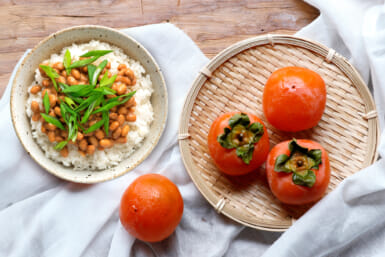with Donna Sweeny
Some Like It Hot
Here’s one for all you trivia fans:
What spice… is the most widely sold in the world? Was valued by the ancient Greeks for its curative powers (for which it is still used today)? Grows so easily that its seeds, planted by the Spanish missionaries in the 18th century, still flower along the Mission Trail in California?
Stumped? Here are some clues:
This spice. . .is one of the world’s oldest; traces of it have been found in prehistoric caves in China. Was so highly thought of by literary luminary Alexandre Dumas that he wrote an essay about it. Can be mixed with almost any potable liquid to produce a wide variety of flavors from bland and subtle to coarse and fiery.
Give up? The answer is mustard seed.
Although mustard seed, and prepared mustard, have been consumed for thousands of years, it was really in the Middle Ages that it became an integral part of European cooking; almost all cookbooks of ‘he period discuss it in some tail. By the 13th century, it as as common to find a mustard grinder on the dining table as it is to find pepper mills today.
The city of Dijon, situated in the heart of Burgundy, has long been synonymous with mustard. It was here that ground mustard was first combined with verjuice, the sour juice of unripened grapes. This combination met with such success that soon mustard producers sprang up all over the region, each offering a slightly different variety.
By the mid-17th century, mustard makers were organized into a guild which regulated the industry. The French were not the first to think of the delicious coupling of mustard with thee juice of grapes; our name for the spice comes from the Roman practice of mixing the ground seeds with mustum ardens, grape juice not yet fermented into wine.
There is almost an endless variety of prepared mustards and even small grocery stores will usually stock a few. As a rule, English mustard, sometimes called Chinese or Oriental, is the most powerful. German mustards range from the sweet brown Bavarian to the spicy yellow Dusseldorf. Coarsely ground mustards, in which the seeds have just been cracked, usually have a mild flavor.
Perhaps the most popular is Dijon-style mustard, moderately hot with smoothness imparted from the wine with which it is made. Flavored mustards, much favored in the past, are popular once again with anchovy, capers and tarragon the most prevalent.
Since the shelf life of mustard is about six months (counting, of course, the time to get from the manufacturer to your local store), it is best to buy in small quantities. Although mustard does not spoil, it will steadily lose its flavor; once opened, it must be refrigerated. A thin slice of lemon, placed on top of the mustard before capping the jar, will help to keep it fresh. In cooking, add mustard toward the end for full strength; if you want just a hint of flavor, add it at the beginning.
Mustard Sauce
This versatile sauce goes as well with vegetables such as asparagus and green beans as it does with meats. It gives veal and lamb an unexpected piquancy.
(makes about 1 cup)
- 4 tablespoons unsalted butter
- 1 tablespoon flour
- 1 cup boiling water
- 2 teaspoons fresh lemon juice
- 2 teaspoons Dijon-style prepared mustard
- 1 teaspoon dried chopped chives
- 1 egg yolk, beaten
- In a saucepan, melt 1 tablespoon of butter over low heat. Slowly add the flour, stirring constantly until smooth.
- Pour the boiling water into the saucepan; add the remaining butter, in small pieces, until it is melted.
- Add the lemon juice, mustard and chopped chives and stir until all the ingredients are thoroughly combined.
- Just before serving, blend in the beaten egg yolk.
Spicy Baked Potatoes (serves 4)
- 8 ounces cream cheese, softened
- 3 tablespoons spicy brown prepared mustard
- 1 teaspoon chopped fresh basil
- 1/3 cup chopped black olives
- 1/2 cup chopped pimentoes
- 2 tablespoons capers, drained
- 1/3 cup chopped onion
- 4 baked potatoes, split
- 4 parsley sprigs for garnish
- In a bowl, combine the cream cheese and mustard.
- Add the basil, olives, pimentoes, capers, and onion; mix well until all the ingredients are thoroughly combined.
- Spoon the mixture over the baked potatoes and garnish with parsley.
Mustard Sole (serves 4)
- 1/4 cup mayonnaise
- 1/2 cup coarsely ground prepared mustard
- 2 teaspoons freshly ground dill seed
- 4 fillets of sole
- Combine the mayonnaise, mustard, and dill seed; spread the mixture on the fillets.
- Put the fish under a broiler for a few minutes until it is cooked through and the top is lightly browned and puffy.
Eggs with Mustard Tuna Sauce
This makes an easy and quick first course; preparation time is less than five minutes.
(serves 4)
- 1 61/2-ounce can of tuna, drained
- 2 teaspoons capers, drained
- 2 tablespoons Dijon-style prepared mustard
- 1 teaspoon anchovy paste
- 1/2 teaspoon dried basil
- 1/4 teaspoon dried savory
- 1/4 teaspoon dried marjoram
- 1 tablespoon fresh lemon juice
- 3/4 cup olive oil
- 8 hard cooked eggs, cut in half
- Fresh basil leaves and 8 pitted black olives for garnish
- In a food processor, combine the tuna, capers, mustard, anchovy paste, basil, savory, marjoram, and lemon juice. With the motor running, add the olive oil in a steady stream until all the ingredients are thoroughly mixed.
- Put 4 tablespoons of sauce on a serving platter and place the eggs on the sauce. Pour the remaining sauce on top and garnish each egg with half a black olive. Arrange the basil leaves around the outside of the platter.
Sweet and Tangy Mustard
If you want to try your hand at making homemade mustard, this is a good recipe to begin with. It has a sweet and sharp taste which makes it a good accompaniment to cold cuts and sausages.
(makes about 2 cups)
- 4 ounces Colman’s mustard
- 1 cup red wine vinegar
- 3 eggs
- 1 tablespoon flour
- 1 cup sugar
- In a large bowl, combine the mustard and vinegar. Whisk well to eliminate lumps; refrigerate overnight.
- Beat the eggs and flour together until smooth; add to the mustard/vinegar mixture. Slowly beat in the sugar.
- Put the mixture in a saucepan and cook over very low heat, stirring occasionally, until it thickens and has the consistency of honey. This should take about 20 minutes. Let the mustard cool, then pour it through a sieve into a jar. Cover and refrigerate.








